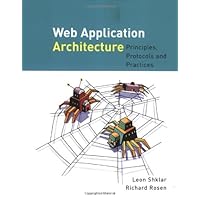
Average Reviews:

(More customer reviews)This book is an ideal text for providing intermediate-level web developers with a solid grounding in architectural principles and more advanced techniques. Before going into why I like this book I do want to offer one caveat - the authors' approach is towards the Model-View-Controller paradigm, and is based on Java Standard Tag Library, Jarkata struts and Apache. These are solid elements, but if you are working in a different environment you will not appreciate this book as much.
The historical material in this book is not fluff if you approach it with the intent to gain a fuller understanding of the major components of the Internet and web. This material is rich with details about why the core web technologies developed and evolved, including design choices the pioneers made in the face of constraints. In a subtle way this part of the book is a primer on design and architecture.
What makes this book so valuable is the non-trivial application that brings this book alive. This is a refreshing change from other books that use thinly contrived snippets of code or trivial applications. The code for this application can be downloaded from the book's supporting web site, which also contains errata (thus far there are only two entries), and articles that are valuable resources with or without this book.
Overall this is one of the better books on web application design and development, and one that dives into code and technical details.
Click Here to see more reviews about: Web Application Architecture: Principles, Protocols and Practices
An in-depth examination of the core concepts and general principles of Web application development.This book uses examples from specific technologies (e.g., servlet API or XSL), without promoting or endorsing particular platforms or APIs. Such knowledge is critical when designing and debugging complex systems. This conceptual understanding makes it easier to learn new APIs that arise in the rapidly changing Internet environment.* Includes discussions of markup languages: HTML, the eXtensible Markup Language (XML), XHTML, eXtensible Stylesheet Language (XSL), and Cascading Style Sheets (CSS)* Contains exercises geared to constructing an advanced XML application that makes use of XML and XSL parsers* Explores emerging technologies: Java 2 Enterprise Edition (J2EE), industry-specific XML standards, Resource Description Framework (RDF), and XML query languages

No comments:
Post a Comment